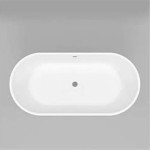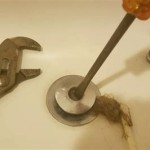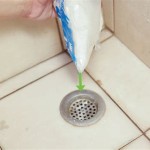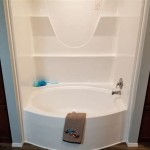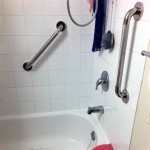How to Fix a Slow-Draining Bathtub
A slow-draining bathtub is a common household plumbing issue that can range from a minor inconvenience to a significant problem. Addressing this issue promptly is crucial to prevent further complications, such as standing water buildup, unpleasant odors, and potential damage to the plumbing system. Understanding the common causes of slow draining and the appropriate corrective actions can empower homeowners to resolve the problem efficiently, often without the need for professional plumbing assistance.
The primary culprit behind a slow-draining bathtub is usually a blockage within the drainpipe. This blockage typically consists of hair, soap scum, mineral deposits, and other debris that accumulate over time. Identifying the location and composition of the clog is the first step in resolving the issue. The effectiveness of the chosen solution depends heavily on accurately diagnosing the root cause of the slow drainage.
Identifying the Cause of the Slow Drain
Pinpointing the source of the slow drain is essential. Factors influencing the drainage speed should be carefully considered. Is the drain consistently slow, or does it only worsen over time? Does the slowdown occur immediately upon filling the tub, or only after a period of use? Answering these questions will help narrow down the potential causes and guide the troubleshooting process.
One of the initial diagnostic steps is a visual inspection of the drain opening in the bathtub. Look for any visible obstructions, such as hair clumps or accumulated debris. If a pop-up drain stopper is present, examine the area around the stopper for buildup. Often, removing this visible debris is enough to restore proper drainage.
Another indicator of the nature of the blockage can be the sound the drain makes while emptying. Gurgling sounds may indicate a partial blockage, or even issues with the plumbing vent. Listen carefully for any unusual noises that could provide clues about the location and severity of the problem.
Finally, consider whether other drains in the bathroom, such as the sink, are also draining slowly. If multiple drains are affected, the blockage may be located further down the drain line, affecting the entire bathroom's plumbing. This would necessitate a different approach than if only the bathtub is experiencing drainage issues.
Simple Solutions: Initial Attempts at Clearing the Drain
Before resorting to more complex or potentially damaging methods, several simple solutions can be attempted. These methods are generally safe and non-invasive, making them a good starting point for troubleshooting a slow-draining bathtub.
Removing Surface Debris: As mentioned previously, the most immediate action is to manually remove any visible hair or debris from the drain opening. Using tweezers, a bent wire hanger, or a specialized drain cleaning tool with a hook can effectively remove clumps of hair and other obstructions that are easily accessible. This can be surprisingly effective, especially if the blockage is near the surface of the drain.
Hot Water Flush: Flushing the drain with boiling water can help dissolve soap scum and loosen minor blockages. Carefully pour a kettle or pot of boiling water directly down the drain, taking precautions to avoid burns. Repeat this process a few times, allowing the hot water to sit for a few minutes between each flush. Exercise caution, as boiling water can damage PVC pipes. If your plumbing is made of PVC, use very hot, but not boiling, water.
Plunger Use: A standard cup plunger can be used to dislodge blockages in the drain. Ensure there is enough water in the bathtub to cover the cup of the plunger. Create a tight seal around the drain opening and vigorously plunge up and down for several minutes. Remove the plunger and check if the water is draining more quickly. Repeat the plunging process if necessary. This method uses pressure to force the blockage to move.
Advanced Techniques: Chemical Solutions and Drain Snakes
If the initial attempts to clear the drain prove unsuccessful, more advanced techniques may be required. These methods involve using chemical drain cleaners or employing a drain snake to physically remove the blockage.
Chemical Drain Cleaners: Chemical drain cleaners are commercially available solutions designed to dissolve clogs. While effective in some cases, these cleaners should be used with caution. They often contain harsh chemicals that can damage pipes, especially older plumbing systems. Always follow the manufacturer's instructions carefully, and wear appropriate protective gear, such as gloves and eye protection. Avoid mixing different types of drain cleaners, as this can create dangerous chemical reactions. Furthermore, repeated use of chemical drain cleaners can corrode pipes over time, leading to more significant plumbing problems.
Using a Drain Snake: A drain snake, also known as a plumbing snake or auger, is a flexible tool designed to physically break up and remove clogs from drainpipes. Drain snakes come in various lengths and types, ranging from simple hand-operated models to more sophisticated power-driven versions. To use a drain snake, carefully insert the tip of the snake into the drain opening and feed it down the pipe until you encounter resistance. Rotate the handle or activate the motor (if using a power snake) to break up the clog or hook onto it. Slowly retract the snake, removing any debris that is attached. Repeat the process until the drain flows freely. Exercise caution when using a drain snake to avoid scratching the bathtub surface or damaging the drainpipe. It's very important to avoid excessively forcing the snake, as this can cause it to become lodged in the pipes.
When using a drain snake, it's also helpful to have a bucket and some rags or paper towels available to collect the debris that is pulled out of the drain. This will help keep the bathroom clean and prevent the spread of unpleasant odors. After using the drain snake, thoroughly rinse the snake and the drain with hot water to flush away any remaining debris.
Preventative Measures: Maintaining a Clear Drain
Preventing clogs from forming in the first place is the best way to ensure a bathtub drains properly. Implementing simple preventative measures can significantly reduce the frequency of slow-drain issues and save time and effort in the long run.
Hair Catcher Installation: Installing a hair catcher or drain screen over the drain opening is one of the most effective preventative measures. These devices trap hair and other debris before they enter the drainpipe, preventing clogs from forming. Hair catchers are inexpensive and readily available at most hardware stores. Regularly cleaning the hair catcher of accumulated debris is essential to maintain its effectiveness.
Regular Drain Flushing: Periodically flushing the drain with hot water can help prevent the buildup of soap scum and other minor debris. Pouring a kettle of hot (but not necessarily boiling) water down the drain once a week can help keep the pipes clear. In addition to hot water, a mixture of baking soda and vinegar can also be used to flush the drain. Pour a cup of baking soda down the drain, followed by a cup of vinegar. Let the mixture fizz for 30 minutes, and then flush with hot water. This combination helps break down grease and dissolve minor blockages.
Avoiding Pouring Certain Substances Down the Drain: Avoid pouring grease, oil, or other viscous substances down the bathtub drain. These substances can solidify and accumulate within the pipes, leading to significant blockages. Properly dispose of these materials in designated containers instead of flushing them down the drain.
Professional Plumbing Inspection: Scheduling regular plumbing inspections with a qualified professional can help identify potential problems before they escalate. A plumber can inspect the drain lines for signs of corrosion, buildup, or other issues that could contribute to slow drainage. They can also perform preventative maintenance, such as hydro-jetting, to thoroughly clean the pipes and remove any accumulated debris. Regular inspections can save money in the long run by preventing costly repairs.
By understanding the causes of slow-draining bathtubs, employing appropriate troubleshooting methods, and implementing preventative measures, homeowners can effectively manage this common plumbing issue and maintain a properly functioning bathroom. Consistent effort to remove visible debris, regular flushing with hot water, and the use of hair catchers can make a significant difference in preventing clogs and ensuring a smooth-draining bathtub.

How You Can Fix A Slow Draining Drain On Your Own Ashton Plumbing Heating Air Conditioning

5 Easy Ways To Unclog Bathtub Drain

How To Fix A Slow Draining Bathtub

How To Fix A Slow Draining Bathtub Oatey

Top 5 Tips On How To Unclog A Bathtub Drain Smiley Cleaning

How To Unclog Bathtub Drain Pipes Save 200 In Two Minutes

How To Fix A Slow Draining Bathtub 1 Tom Plumber

Slow Bathtub Drain Causes Solutions Advanced Plumbing

What To Do If My Bathtub Is Clogged

How To Fix A Slow Draining Bathtub 1 Tom Plumber


